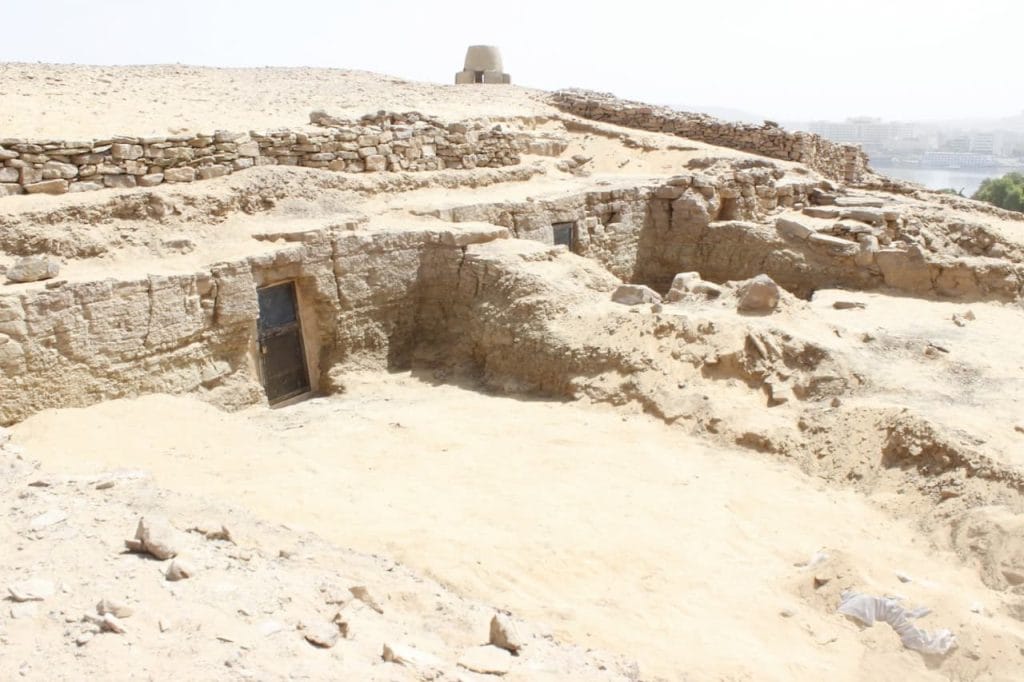In a significant archaeological breakthrough, Egyptian experts have uncovered three ancient rock-hewn tombs in the Qubbet el-Hawa necropolis, a site long known for its burial chambers of elite figures from Egypt’s ancient dynasties. The newly found tombs are believed to date back to the Old Kingdom period (2686–2181 BC), Egypt’s Ministry of Tourism and Antiquities announced on Saturday.
The find was made by an Egyptian archaeological mission currently conducting fieldwork at the site, located on the west bank of the Nile River, directly across from the city of Aswan. The tombs, carved into the bedrock, reflect the enduring funerary traditions that defined the region for centuries.
Mohamed Ismail Khaled, Secretary-General of the Supreme Council of Antiquities (SCA), explained that preliminary studies show evidence of later reuse of some of the tombs during the Middle Kingdom era (2055–1650 BC). This continuity of use suggests that Qubbet el-Hawa remained an important burial ground through successive periods, serving as a resting place for individuals over many generations.
Khaled emphasized the importance of this discovery in understanding the transition between the end of the Old Kingdom and the onset of the First Intermediate Period, a time often characterized by political fragmentation and socio-economic shifts. While some tombs were found without inscriptions, their design and internal features still mirror customary burial practices, potentially indicating that resources may have been scarce for some of those buried.
Mohamed Abdel-Badie, head of the SCA’s Egyptian Antiquities Sector, provided further details on the architecture and contents of the tombs. He noted that two of the tombs shared similar layouts and included ritual elements such as offering tables and pottery vessels, along with wooden coffins and skeletal remains.
The third tomb stood out for its distinct architectural style and the abundance of funerary goods it housed. Among the discoveries were numerous well-preserved ceramic vessels and the remains of both adults and children, offering a broader picture of the individuals who might have been interred there and the burial practices that surrounded them.
Qubbet el-Hawa has long been regarded as one of southern Egypt’s most significant archaeological sites, renowned for its rock-cut tombs belonging to nobles and high officials, particularly from the Old and Middle Kingdoms. This latest excavation reinforces the necropolis’s importance, not just as a burial ground, but also as a valuable archive of architectural and cultural evolution.
According to the ministry, the discovery adds new depth to scholarly understanding of how burial customs adapted over time and provides further evidence of Qubbet el-Hawa’s prominent role in ancient Egyptian funerary traditions.



